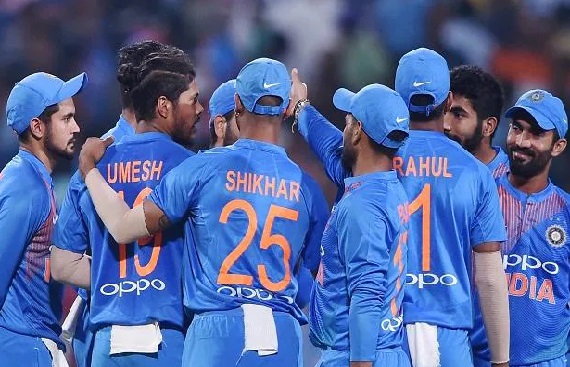How India's ODI Squad for WI Series looks like?

After the 5th Test match of India vs England, the Board of Control for Cricket in India (BCCI) announced the squad for India's three-match ODI series against the West Indies. Few senior players are made to rest, including Virat Kohli, Rohit Sharma, Rishabh Pant, Mohammed Shami, and Jasprit Bumrah. Shikhar Dhawan is chosen as captain to lead the team against West Indies. In the absence of the regulars, a few players have joined the ODI team after more than a year—in some cases, almost two years—while others have been left out, suggesting that the board has moved on from them.
Shikhar Dhawan will be the eighth captain in the last ten months. For the Indian men's cricket team, the captaincy has recently been handed over like a lottery. KL Rahul (one Test and three ODIs), Virat Kohli (one Test), Rohit Sharma (six T20 Internationals and two Tests), Rishabh Pant (five T20 Internationals), Hardik Pandya (two T20 Internationals against Ireland), Dinesh Karthik (two warm-up T20 Internationals), and Jasprit Bumrah (one Test) have all captained the national team in 2022 for various reasons.
Dhawan has experience serving as captain, having led the second-string team in Sri Lanka last year in 6-match with white-ball series. Dhawan hasn't played in any T20Is since; nevertheless he has consistently participated in the 50-over format. It's odd that he was awarded the skipper at this stage, however it confirms that he isn't going anywhere, at least in the ODIs until the World Cup next year at home.
Why BCCI is struggling to get stable captain for Team India?
![]()
No city is built in a day, nor was the tradition of a prompt and competent captaincy transition in Indian cricket. M.S. Dhoni had only begun laying the groundwork for it in 2014. Even Virat Kohli's recent "stepping down" and "removal" as captain from various game formats in three months. Indian cricket witnessed the demise of a culture that was starting to make us proud.
However, Dhoni's plan was distinct. He had a fantastic ability to close out games and his captaincy innings. To facilitate the Aristotelian five-part "foul" drama being replaced by a more contemporary, "refreshing," two-part story, he planned and then left an ideal handover culture planted and carried out. Unlike the scenario, the Indian team is in, which involves losing the match, the series.
Dhoni's departure execution extended his white-ball career, giving Kohli time to master the red-ball captaincy. In a team of 11, India already had two captains ready — a luxury it couldn't afford for the next few tournaments. Every captain has a shelf life. It's just that one needs to realize when he has reached the end of that cycle. Sunil Gavaskar had that judgment, and so did Mahendra Singh Dhoni. Virat Kohli admitted it just before the T20 World Cup and chose to resign his leadership role in the shortest format.
If one talks to people in the corridors of Indian cricket, they think that Kohli, while playing bilateral cricket, always brings a chance to do course correction against the same opposition if anything goes wrong. He finds it more comfortable to plan and lead if there is one opponent for five games in a row. He never appears in control when it becomes a multi-team event, where the plan and strategy change one game after the other.
Kohli's exit and handling had caused the Indian cricket administration around by at least two decades to the time when the Tendulkars and Azhars had to ping-pong the captaincy duty. Despite unsatisfactory results, their two terms as skippers are sometimes quoted as a lack of all-around talent in the team to risk claim to the leader's position.
India’s ODI Squad for West Indies
![]()
While the star players were at rest, a return for Sanju Samson was on the cards as the second wicket-keeping option. Still these are short-term decisions as the 27-year-old isn't part of the squads when the regulars return, the 2nd and 3rd T20I teams for England T20I being the huge indicators. Samson may/may not get opportunities, although every chance he gets could be his last, and hence he would have to keep playing the innings as he did against Ireland in the series decider whenever he is named in the side.
The Shubman Gill returns to the ODI side for the first time since the Australia series in 2020, and Hooda has also returned. The WI series provides a chance for the trio to prove their name in the next-gen ODIs as the Indian cricket team is slowly shifting in a couple of years. Several conclusions have raised eyebrows. The squad has shown signs of Hardik becoming a white-ball regular and might be given rest against lower-ranked teams.
The absence of Bhuvneshwar Kumar from both ODI squads means he might just be deemed a T20 player like Harshal Patel and Dinesh Karthik. One can only expect that the T20I team against West Indies might see some consistency in selecting, as T20 World Cup 2022 is around the corner. Nevertheless, the Men in Blue might keep experimenting in the ODIs.
Read More News :
Rohit Sharma Achieves T20I Captaincy Record With India's Win Over England In Southampton


.jpg)
